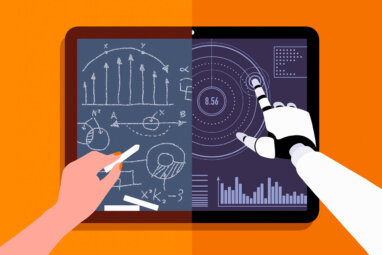Why Digitization Won’t Put Operations Managers Out of Work
What’s happening this week at the intersection of management and technology.
Topics
Tech Savvy
Digitization will make new demands on operations managers: On Oct. 3, ING Group joined a growing number of big European banks when it announced a big investment in digital technology (800 million euros) and a big reduction in force (11% or 5,800 jobs). “Unfortunately digital transformation means less jobs,” CFO Patrick Flynn told Bloomberg Television not very ruefully.
But perhaps not fewer management jobs. “Even as organizations balance lower investment in traditional operations against greater investment in digital, the need for operations management will hardly disappear,” write McKinsey consultants Albert Bollard, Alex Singla, Rohit Sood, and Jasper van Ouwerkerk in a new article in McKinsey Quarterly. “In fact, we believe the need will be more profound than ever.”
In the near term, the challenge will be the ability of companies “to embrace digital innovation and operations-management discipline at the same time.” That, the authors say, will require figuring out how to combine digital and human resources, modify employee roles to showcase and sustain digitization, support customers as they figure out how to work with the organization, and develop leaders and managers with “much stronger day-to-day skills in working with their teams.”
VR products for tactile training: Last week Google announced a long list of consumer products — smart phones, wifi routers, voice-activated speakers, TV streaming devices — including a VR platform and headset. One thing it didn’t announce was the robotic arm that it had developed to experiment with cloud robotics (more in the next item below) because, as Mark Bergen reports in Bloomberg Technology, “it failed Chief Executive Officer Larry Page’s ‘toothbrush test,’ a requirement that the company only ship products used daily by billions of people.”
As frustrating as that might be for the folks in Google’s robotics division, it should come as welcome news to companies, like Dextarobotics, that are developing VR products for the commercial market. Dextarobotics, reports Simon Parkin in MIT Technology Review, makes the Dexmo glove, which lets you handle virtual objects as if they were actually in your hand. “A virtual baseball feels firm in the hand, an egg fragile. Pick up a digital rubber duck while wearing the Dexmo, and it can be squished pleasingly between the fingers,” writes Parkin.
Dexmo, which is still in development, has a variety of applications.






Comment (1)
Sandeep Raut